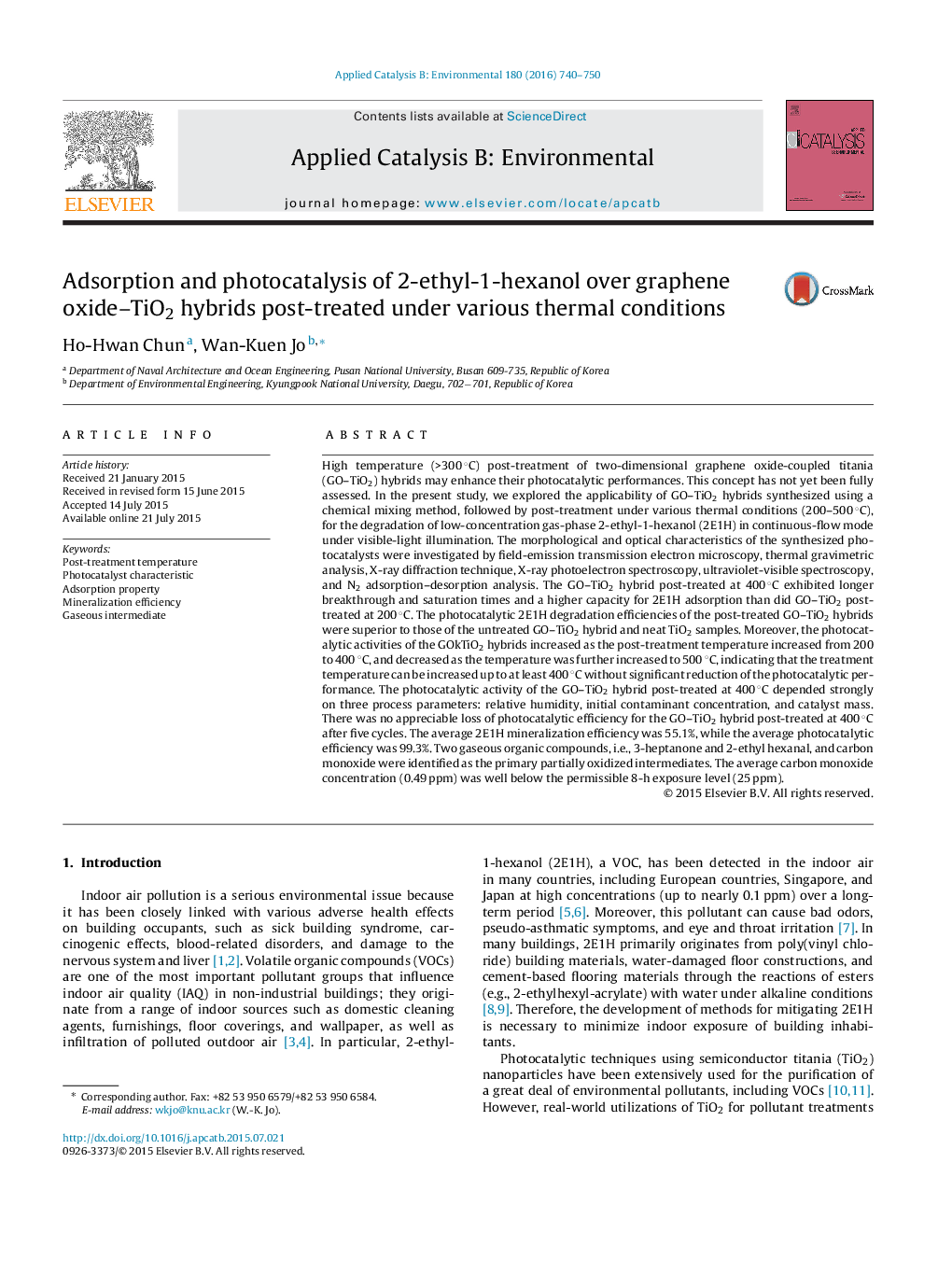| Article ID | Journal | Published Year | Pages | File Type |
|---|---|---|---|---|
| 45295 | Applied Catalysis B: Environmental | 2016 | 11 Pages |
•Graphene oxide–TiO2 hybrids were synthesized using various post-heat treatments.•Photocatalysis of gaseous 2-ethyl-1-hexanol over the hybrids were investigated.•Adsorption and photocatalytic natures of the hybrid varied with treatment temperature.•Photocatalytic activity of post-treated hybrid was superior to that of untreated one.•Two gas-phase organics and carbon monoxide were observed as major intermediates.
High temperature (>300 °C) post-treatment of two-dimensional graphene oxide-coupled titania (GO–TiO2) hybrids may enhance their photocatalytic performances. This concept has not yet been fully assessed. In the present study, we explored the applicability of GO–TiO2 hybrids synthesized using a chemical mixing method, followed by post-treatment under various thermal conditions (200–500 °C), for the degradation of low-concentration gas-phase 2-ethyl-1-hexanol (2E1H) in continuous-flow mode under visible-light illumination. The morphological and optical characteristics of the synthesized photocatalysts were investigated by field-emission transmission electron microscopy, thermal gravimetric analysis, X-ray diffraction technique, X-ray photoelectron spectroscopy, ultraviolet-visible spectroscopy, and N2 adsorption–desorption analysis. The GO–TiO2 hybrid post-treated at 400 °C exhibited longer breakthrough and saturation times and a higher capacity for 2E1H adsorption than did GO–TiO2 post-treated at 200 °C. The photocatalytic 2E1H degradation efficiencies of the post-treated GO–TiO2 hybrids were superior to those of the untreated GO–TiO2 hybrid and neat TiO2 samples. Moreover, the photocatalytic activities of the GOkTiO2 hybrids increased as the post-treatment temperature increased from 200 to 400 °C, and decreased as the temperature was further increased to 500 °C, indicating that the treatment temperature can be increased up to at least 400 °C without significant reduction of the photocatalytic performance. The photocatalytic activity of the GO–TiO2 hybrid post-treated at 400 °C depended strongly on three process parameters: relative humidity, initial contaminant concentration, and catalyst mass. There was no appreciable loss of photocatalytic efficiency for the GO–TiO2 hybrid post-treated at 400 °C after five cycles. The average 2E1H mineralization efficiency was 55.1%, while the average photocatalytic efficiency was 99.3%. Two gaseous organic compounds, i.e., 3-heptanone and 2-ethyl hexanal, and carbon monoxide were identified as the primary partially oxidized intermediates. The average carbon monoxide concentration (0.49 ppm) was well below the permissible 8-h exposure level (25 ppm).
Graphical abstractFigure optionsDownload full-size imageDownload as PowerPoint slide
